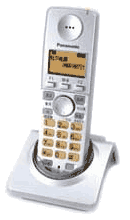Chinese LetterWise |
|
|
|
|
Contents |
Overview
Chinese-LetterWise is essentially a two-level version of alphabetic LetterWise, with some technology to make conversion from the first level (Pinyin or Bopomofo) to the second level (hanzi characters) happen automatically, whenever possible. This automatic conversion is an important point which further distinguishes the Eatoni method from competing methods. It retains the what-you-see-is-what-you-get aspect of regular LW, and also virtually eliminates pressing the "convert" button.
Therefore, the users manual of Chinese-LW has the same structure as the users manual for LetterWise:
1) hit next to get the next latin letter, if the intended one does not appear.
2) hit hanzi next to get the next hanzi, if the intended hanzi does not appear.
Demos
|
Chinese Demo (1.7MB)) |
Available Devices
Visit our Devices page to see which DECT phones are currently using Chinese LetterWise.
Memory Requirements
As with alphabetic-language LetterWise, the size of Chinese LW depends on the number of characters, and the quality of prediciton required. We find that a database of 128kb of ROM which uses 3100 hanzi provides excellent prediction. This includes Hanzi down to those which occur only once every 500,000 characters on average.
Motivation for using Chinese LetterWise
Some advantages that should interest manufacturers are:
1) Easier to use than any competing software. Has a unique, patent-pending method which allows users to avoid hitting "convert" to convert pinyin to hanzi in most instances.
2) As Eatoni can work with as low as 64k bytes for code + data, whereas competing systems need 256k bytes or more for code+data. Eatoni requires only ROM, while competing systems usually also require user-writable memory.
3) Much simplier API than competing systems.
| Page tools: Content [Comments] [Printable version] |






